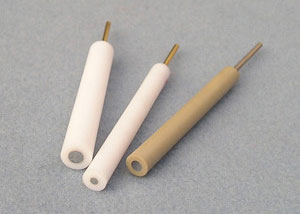How to Prepare Carbon Electrode Paste for Electrochemical Applications?
Are you interested in electrochemical applications but not sure how to prepare carbon electrode paste? Look no further! Let’s start with the basics.
What is a Carbon Electrode Paste?
A carbon electrode paste is a mixture of graphite powder and a binder, such as mineral oil or paraffin wax. This mixture is used to create an electrode for electrochemical applications, such as voltammetry or amperometry. Carbon electrodes are widely used in electrochemical research due to their low cost, good conductivity, and stability.
Materials Needed
Before we dive into the preparation process, let’s gather the materials needed for making a carbon paste electrode:
* Graphite powder (particle size: 2-10 µm)
* Binder (mineral oil or paraffin wax)
* Glass mortar and pestle
* Glass rod
* Weighing balance
* Spatula
* Petri dish
* Carbon electrode or glassy carbon substrate

Preparation Process
Now that we have our materials, let’s move on to the preparation process. Here are the steps:
* Weigh out the required amount of graphite powder and place it in the glass mortar.
* Add a small amount of the binder (e.g. 10% by weight of graphite) to the mortar.
* Grind the mixture using the pestle until a smooth, homogeneous paste is formed.
* Slowly add the remaining binder to the mixture while grinding continuously, until the desired consistency is achieved. The consistency of the paste should be such that it can be easily spread on the electrode substrate without cracking or breaking.
* Transfer the paste to a clean Petri dish.
* Take a glass rod and spread the paste evenly on the carbon electrode or glassy carbon substrate. Ensure that the paste covers the entire surface of the electrode, leaving no gaps.
* Allow the paste to dry at room temperature for a few hours, or alternatively, dry it in an oven at 60-70°C for about an hour.
And voila! Your carbon paste electrode is now ready to use in your electrochemical experiments.





